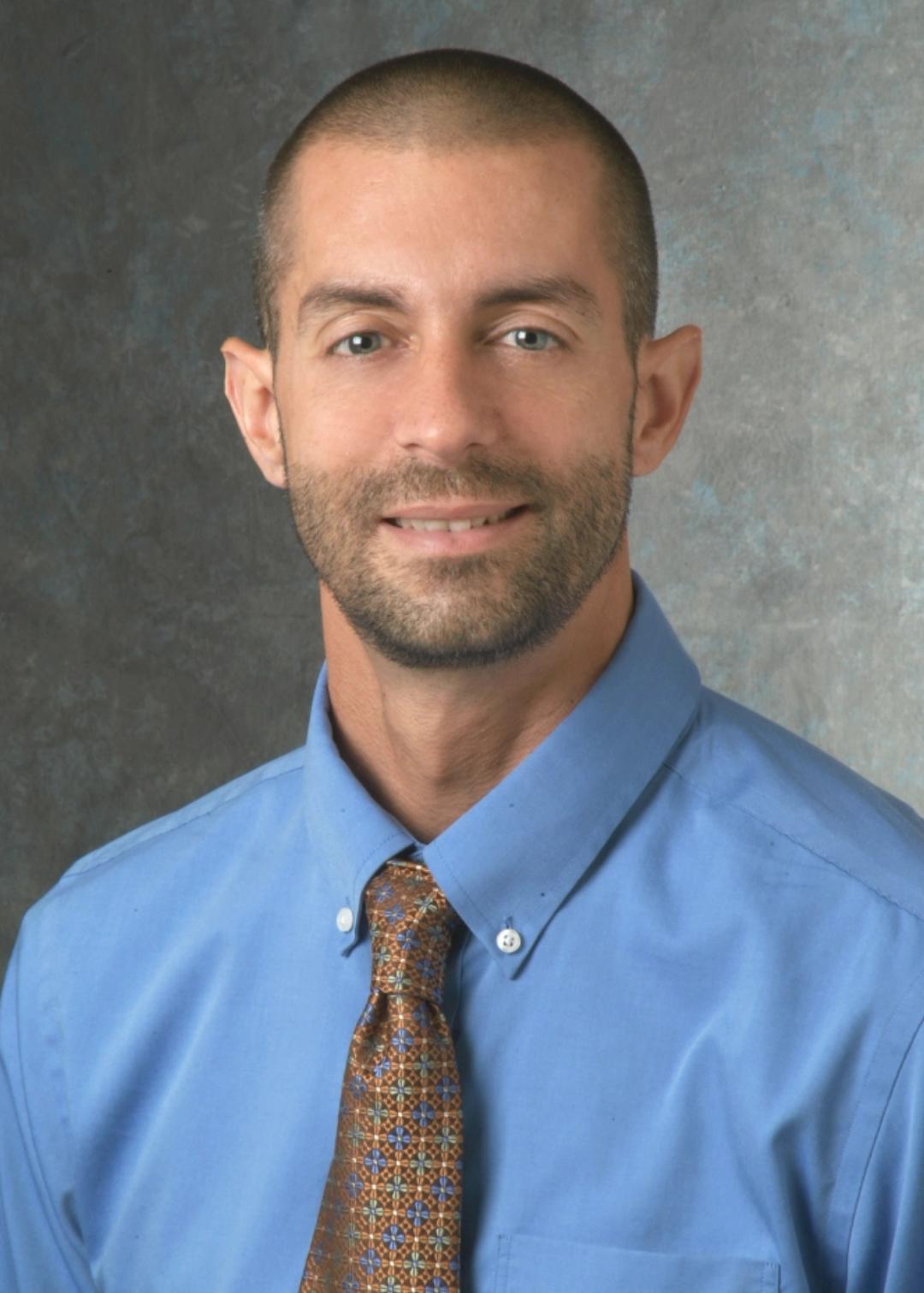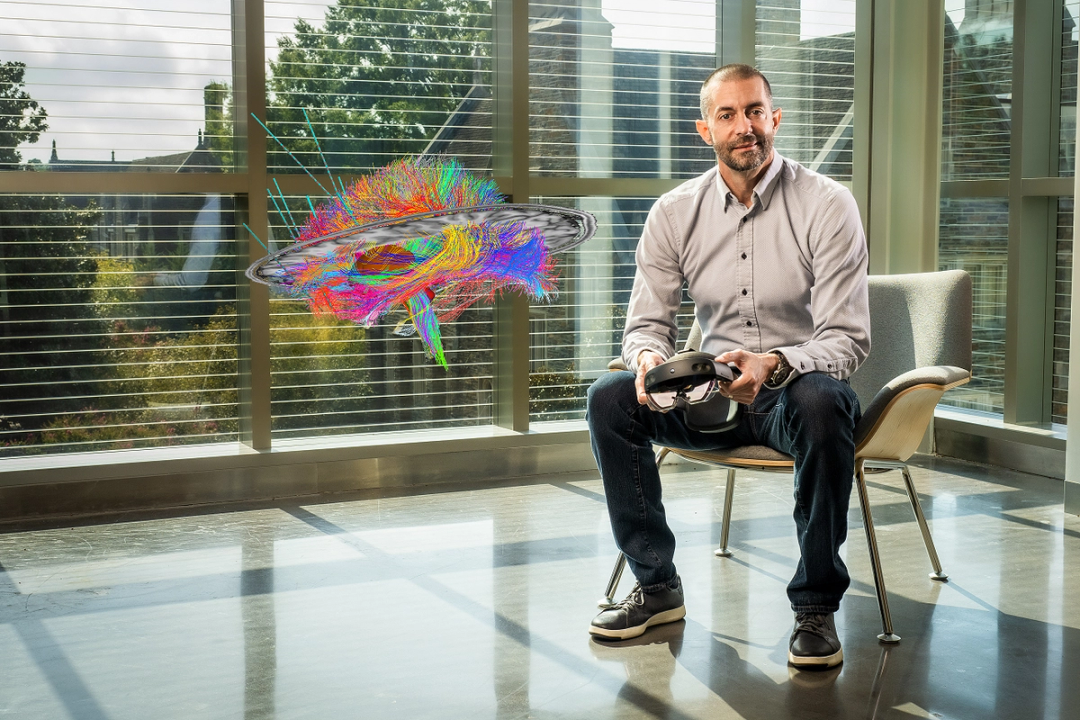Meet Dr. Cameron McIntyre
Biomedical Engineer
Dr. Cameron McIntyre is a professor of biomedical engineering at Duke University. He studies deep brain stimulation (DBS), a neurosurgical procedure during which implanted electrodes assist brain activity. Connecting elements of neuroscience, entrepreneurship, and innovation, Dr. McIntyre works to develop novel DBS devices for clinical treatment of neurological disorders.
STEM to the Sky
Jul 22, 2022
- How did you become interested in biomedical engineering?
- What exactly is deep brain stimulation?
- What surprised you the most about your role?
- What do you love about your job, and what keeps you pushing for further advancements?
- What is the GUIDE DBS clinical programming system that you developed?
- What is an exciting project that you are working on?
- What do you hope to see in the future of biomedical engineering and neuroscience?
- How would you compare industry to academia?
- Can you walk us through a typical day in your life?
- What would you say to a student who is interested in pursuing biomedical engineering?
How did you become interested in biomedical engineering?
I was a reasonably good athlete as a kid. My whole life revolved around sports, and that’s what I cared about. But in college, I was introduced to the whole concept of how math and science can be used in combination with engineering techniques and technologies to address clinically relevant research questions and maybe even develop clinically relevant technology. That was just extremely captivating to me, and it was pretty clear I was not going to be an NBA basketball player, so I better find something to do to have a job.
I did my undergrad at Case Western Reserve University in Cleveland, Ohio. It’s a great university for biomedical engineering. They had a really strong emphasis on clinical applications of biomedical engineering technologies, especially neuroengineering, which is primarily related to implantable devices that put electrodes into the nervous system to then stimulate the nervous system to create behavioral function. You can use that for many purposes, including to treat diseases or to restore function.
From my sophomore, junior, and senior years in college, I volunteered at a research laboratory that was working on human brain and spinal cord stimulation. That allowed me to start working towards a Ph.D. after I had that undergraduate research training.

(Credit: Cameron McIntyre)
What exactly is deep brain stimulation?
Deep brain stimulation is a relatively common implantable brain stimulation device primarily used for the treatment of neurological disorders including advanced late stage Parkinson’s disease. These are devices that are analogous to cardiac pacemakers, except the electrodes are implanted in the brain.
There are a couple of very specific target locations in the brain that are used for the treatment of Parkinson’s disease. One of them is called the subthalamic nucleus, which is a small, almond shaped nucleus deep inside your brain, hence the words “deep brain stimulation”. These devices have been in use for almost 30 years now as an accepted clinical strategy that treats the disease. Over the last 10 years, these devices have started to become a lot more technologically advanced. We have new kinds of electrodes and systems that can stimulate and record at the same time, so we’re getting all kinds of new, interesting data to help customize stimulation to the individual patient.
What surprised you the most about your role?
Until the end of my Ph.D. training, I hadn’t really seen or appreciated the interaction between the clinician, the neurologist, or the neurosurgeon and the technology. I only saw the end product of the technology on the patient.
As engineers, we tend to take for granted that if I’ve designed this cool thing, then the user should just be able to use it. It should be simple. In reality, once I had that exposure of the clinical interaction with the devices, I noticed that users hadn’t had all the same training that I had as an engineer to learn how the devices function or what the pieces of the devices actually are. There was a really interesting opportunity there to think about not just how to make the devices better, but how to make the devices more useful to the clinical users of the device that treats the patient.
What do you love about your job, and what keeps you pushing for further advancements?
I love everything about it. We’re working on trying to understand the brain. We’re trying to understand how individual neurons in the brain work together to create disease or to create the beautiful things that the brain can do. It’s really amazing. I’m 47 years old now, and I still love learning as much as I did when I was 20 years old. It’s so much fun to learn a new thing, and it doesn’t always have to be about the brain. I can learn new things about how a computer works, how an electrical circuit is designed, or how an electrode might function. So, you can learn cool neuroscience things, and you can learn cool engineering things. What I really love about my job is that I feel like it’s a little bit of both. I love how those two worlds come together.
The big goal that I always feel like I’m working towards is to see these kinds of brain stimulation or brain neuromodulation technologies work. I want to feel like I had an influence and made those technologies really useful for patients that have these terribly unfortunate neurological disorders. You’re never going to be able to make their lives back to the way it was before they had their disease, but you can make people’s lives better with these kinds of technologies. It’s such a wonderful thing to feel like you have had a contribution to seeing that happen.
“You’re never going to be able to make their lives back to the way it was before they had their disease, but you can make people’s lives better with these kinds of technologies.”
DR. CAMERON MCINTYRE
What is the GUIDE DBS clinical programming system that you developed?
When you develop technology, there is the end goal to help the patient. There are also steps to ensure that the users of the technology are able to use it as efficiently and as effectively as possible. The opportunity that our group really recognized in the area of deep brain stimulation was that these devices that would be implanted are pretty complicated. The clinicians who are using them are very smart people, but they’re not necessarily electrical engineers or computer scientists. You have to customize the stimulation to the individual patient. This is a very time consuming process, and it takes a lot of clinical training and expertise to be able to do it with robust, high quality outcomes.
We realized we can use things like brain imaging data and biophysical computational models and put that into a software package that the clinicians would be able to use to help them customize the stimulations to the individual patient. That was the premise of the company. Then, we developed a prototype and did some clinical testing of this prototype. First we had this little tiny startup company, and then that little tiny startup company got acquired by a big giant company that makes these kinds of DBS devices. They went on to make a full product around that package.
What is an exciting project that you are working on?
For the last five or six years, we’ve been developing these neurosurgical planning tools. There’s a lot of three dimensional information that we have to use, such as the imaging data and all their detailed neuroanatomy. Usually they’re implanting electrodes in several different places, so it starts to become very complicated finding a safe way to get the electrodes to the right part of the brain. You’ve got to avoid all the blood vessels and you’ve got to make sure the different electrodes don’t run into each other. I don’t do the real thing, but what I can do is help neurosurgeons do their thing.
When the world of augmented reality and holographic visualization really started coming to bear, we thought that it was a great opportunity. We started building software technologies that work on these things. Now, there are these head mounted displays (Microsoft HoloLens, Magic Leap 1)—devices that you can wear, and you can have this feeling of seeing things in true three dimensions. It’s really quite cool. When you put real patient data into that, you can start to visualize all the details about their specific neuroanatomy and where to put the electrodes in their specific brain. We’ve been working on developing that kind of tool, testing it with our neurosurgeon collaborators, and really starting to use these tools now to help customize these brain stimulation therapies to the patients. It has been so much fun.

(Credit: Cameron McIntyre)
What do you hope to see in the future of biomedical engineering and neuroscience?
I’m very optimistic. I really truly believe that we’ll start to understand the fundamental functions of how brains work at the cellular level, at the micro circuit level, and at the large brain network level. That will then open up the opportunities for us to improve the treatment of neurological disorders, but also just to understand so much more about where the thoughts come from and how the brain controls everything in your body. To me, that is so exciting and so fun. I’m not so sure we’ll figure it out in my lifetime, but maybe in your lifetime. That’s going to be a pretty great transition in human history. I just feel like that will be a really great opportunity for humanity to have a completely different perspective on what it is and how it actually has come to be.
“I really truly believe that we’ll start to understand the fundamental functions of how brains work at the cellular level, at the micro circuit level, and at the large brain network level… That’s going to be a pretty great transition in human history.”
DR. CAMERON MCINTYRE
How would you compare industry to academia?
They’re very different in my opinion, or in my experience. The point of academia is the pursuit of knowledge and the development of novel ideas. There’s nothing in the world, to me, that’s more fun than working on those two big topics. But, big ideas don’t actually help people. They’re just ideas.
Industry gets all the fun stuff of creating something that is tangible and that can be used in society. That work is a little bit more tedious because every step has to be taken in a certain way, and everything has to be documented to the extreme. It’s a different kind of world. The payoff is different, but that’s the only way you get to something that’s out there in the real world and real people benefiting from it. You have to have both.
Can you walk us through a typical day in your life?
I have a laboratory that is full of graduate students and postdoctoral fellows. We all have a common space, but we mostly work on our computer models at our desks all day.
At this point in my career, I don’t spend much time doing my own coding anymore or building my own models. I spend most of my time writing research papers and grant proposals. People come in and ask me questions, and I try to give them good answers. I spend most of my day just at my computer, writing. It sounds pretty boring, but you got a lot of stuff going on in your head, and that’s what makes it fun.
Right now, we do these surgical planning things with holographic visualization tools, which kind of breaks up the day. For example, there would be a patient over in Los Angeles, and we would do their surgical plan with the neurosurgeon working on them.

In his free time, Dr. McIntyre enjoys racecar driving (Credit: Cameron McIntyre)
What would you say to a student who is interested in pursuing biomedical engineering?
The field needs lots of new and young engineers. The most important thing you can do is to find an area that you have interest and passion for and really start to learn as much as you can about that particular area. Once you actually have some base knowledge, try and find some people that you can work with—people who may already be experts or are hoping to become experts in that area too. Those experiences will give you new ideas of things that you either didn’t even know existed before or reinforce that this one thing is the thing that you need to work on to become valuable to that particular area of research or that particular kind of technology development. Once you have a skill that someone thinks is valuable, then that’s how you can become attractive to a research laboratory or to a company, or to whoever might be able to give you another opportunity.